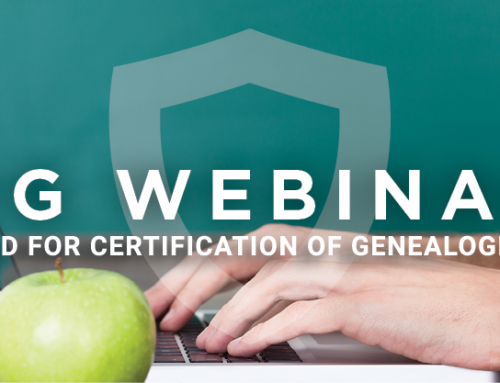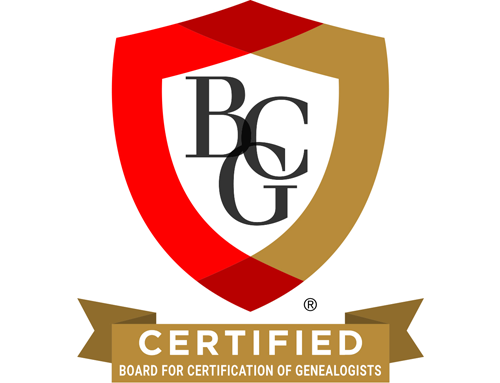“A Convincing Argument or a Convoluted Mess”
Presented by Barbara Vines Little, CG®, FNGS, FUGA, FVGS
Reviewed by Darcie Hind Posz, CG®
NOTE: This post is one of a series reviewing the BCG Skillbuilding lectures presented at the National Genealogical Society’s 2019 Family History Conference held in St. Charles, Missouri from 08-11 May, 2019. Recordings of these lectures and the accompanying session handout can be purchased from PlaybackNow NGS at https://www.playbackngs.com/
With a jaunty hat and a delightful laugh, we were off: Barbara Vines Little adeptly displayed to a packed room how to carefully collect and evaluate evidence in order to organize, then present it in a written product.
Honest about the intricacies of writing, Barbara discussed having a grammar check list, catching capitalization errors, spotting compound sentences and verbs, geographical commas, and the like. She also stressed the importance of verifying URLs, titles, repository names, publication data, and the spelling of names.
She pointed out that “global replace is an accident waiting to happen” for the spelling of names. She encouraged good habits: omit extraneous and unnecessary words to focus the reader on evidence and not a failure to check your work.
Barbara advised not labeling documentation (primary/secondary, original/derivative, direct/indirect), which can lead readers astray. Instead, focus on the evidence without labels. “Present the evidence” and don’t get caught up in “buzzwords.” Examples of readable and streamlined paragraph and footnote construction were shown. Evidence discussion is often the hardest part of writing. Barbara counsels simple, direct writing as a solution.
On writing for publication in a journal, her fantastic suggestions included asking for a style guide and reading articles from a journal before submitting to it. She posed questions that made you think about how you read. Most of what we read is in the third person. Think about what you like to read and how your thoughts and writing could be presented.
Including the by now familiar John Woodson in colonial Virginia, she illustrated sorting several men of the same name. This involved eliminating descriptions for multiple men. Background information included location, topography, historical information, discussions of associates, and lastly, what the evidence contains. Using these components, applying them, and explaining the evidence all contribute to a strong case study.
The words Certified Genealogist and letters CG are registered certification marks, and the designations CGL and Certified Genealogical Lecturer are service marks of the Board for Certification of Genealogists®, used under license by board certificants after periodic evaluation.


